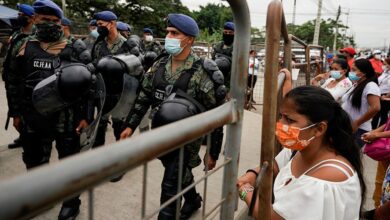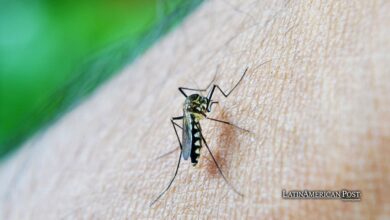Brazil Battles Bird Flu as Seal and Sea Lion Deaths Surge
An outbreak of avian influenza in southern Brazil has led to the deaths of nearly 1,000 seals and sea lions, posing a significant challenge to authorities working to protect commercial poultry.

Photo: Pixabay
The Latin American Post Staff
Escucha este artículo
Leer en español: Brasil lucha contra la gripe aviar mientras aumentan las muertes de focas y leones marinos
Crisis Unfolding
In a concerning development for wildlife and agricultural health, southern Brazil is grappling with an alarming outbreak of bird flu, which has claimed the lives of nearly 1,000 seals and sea lions. This outbreak, a first of its kind in the South American nation, has put authorities on high alert as they work to prevent the virus from spreading to commercial poultry sectors.
The epicenter of this crisis is the Rio Grande do Sul state, where a staggering 942 sea mammal deaths have been recorded. The culprit is the highly pathogenic avian influenza (HPAI), a virus known for its devastating impact on bird populations and, alarmingly, marine mammals.
Immediate Action Needed to Mitigate Risks
Silvina Botta, an oceanographer at Rio Grande Federal University (FURG), has stressed the situation's urgency. According to her, immediate disposal of the carcasses through burial or incineration is critical to mitigate the risk of the virus transmitting to humans or other animal species. The situation has become so dire that some sea mammals have been found convulsing on local beaches, a sign that the virus is attacking their nervous system. In these cases, under government health regulations, euthanasia is being employed to prevent further suffering.
Brazil's first encounter with HPAI in its wild bird population was reported in May. Since then, the Ministry of Agriculture has implemented preventive measures to shield the country's lucrative poultry industry. As the world's leading chicken exporter, Brazil faces significant economic risks if the virus infiltrates commercial farms, potentially leading to export bans.
However, while poultry farms have remained unscathed so far, other animal populations haven't been as fortunate. The virus has wreaked havoc among seabirds, seals, and sea lions. Authorities are also investigating the deaths of porpoises and penguins found along the coast. However, confirmation of the virus in these species is pending.
Emergence of Trouble: Unusual Mortality Rates in September
The first signs of trouble in Rio Grande do Sul emerged in September, with unusual mortality rates among sea mammals drawing the attention of scientists like Botta. Currently, three towns in the state are dealing with active outbreaks. Botta explains that the contagion among sea mammals likely originated in Peru, spreading across the South American continent and impacting wildlife in Chile, Argentina, Uruguay, and Brazil.
Brazil's Agriculture Ministry has reported 148 HPAI outbreaks, predominantly along the coast. The government has declared a health emergency to contain the disease, which, for now, is not considered endemic in Brazil.
Avian influenza, commonly known as bird flu, is no stranger to causing widespread destruction in the animal kingdom. In Europe and the United States, it has led to the culling of hundreds of millions of farm animals. The situation in Brazil, however, marks a disturbing expansion of the virus's impact, affecting marine mammals in numbers previously unseen.
Multifaceted Challenge: Balancing Wildlife Preservation and Economic Interests
This outbreak poses a multifaceted challenge for Brazil. On one hand, there is an urgent need to address the immediate threat to wildlife, particularly in preserving the region's biodiversity and ecological balance. On the other, there's the looming threat to the nation's poultry industry, a significant contributor to the country's economy.
As Brazilian authorities and scientists like Botta continue to battle this outbreak, their efforts are a national concern and part of a global conversation on wildlife diseases and their intersection with human commercial interests. The situation in Brazil serves as a stark reminder of the interconnectedness of ecosystems and the far-reaching impact of diseases like HPAI.
Also read: Puerto Rico's Historic Cats Face Controversial Removal Plan
The world will be watching how Brazil navigates this complex crisis in the coming months. The strategies and measures adopted could offer valuable lessons in managing wildlife diseases, particularly how they intersect with human economic activities. As Brazil confronts this unprecedented challenge, the balance between ecological preservation and protecting its agricultural sector will be critical for its future and as a model for similar crises worldwide.




